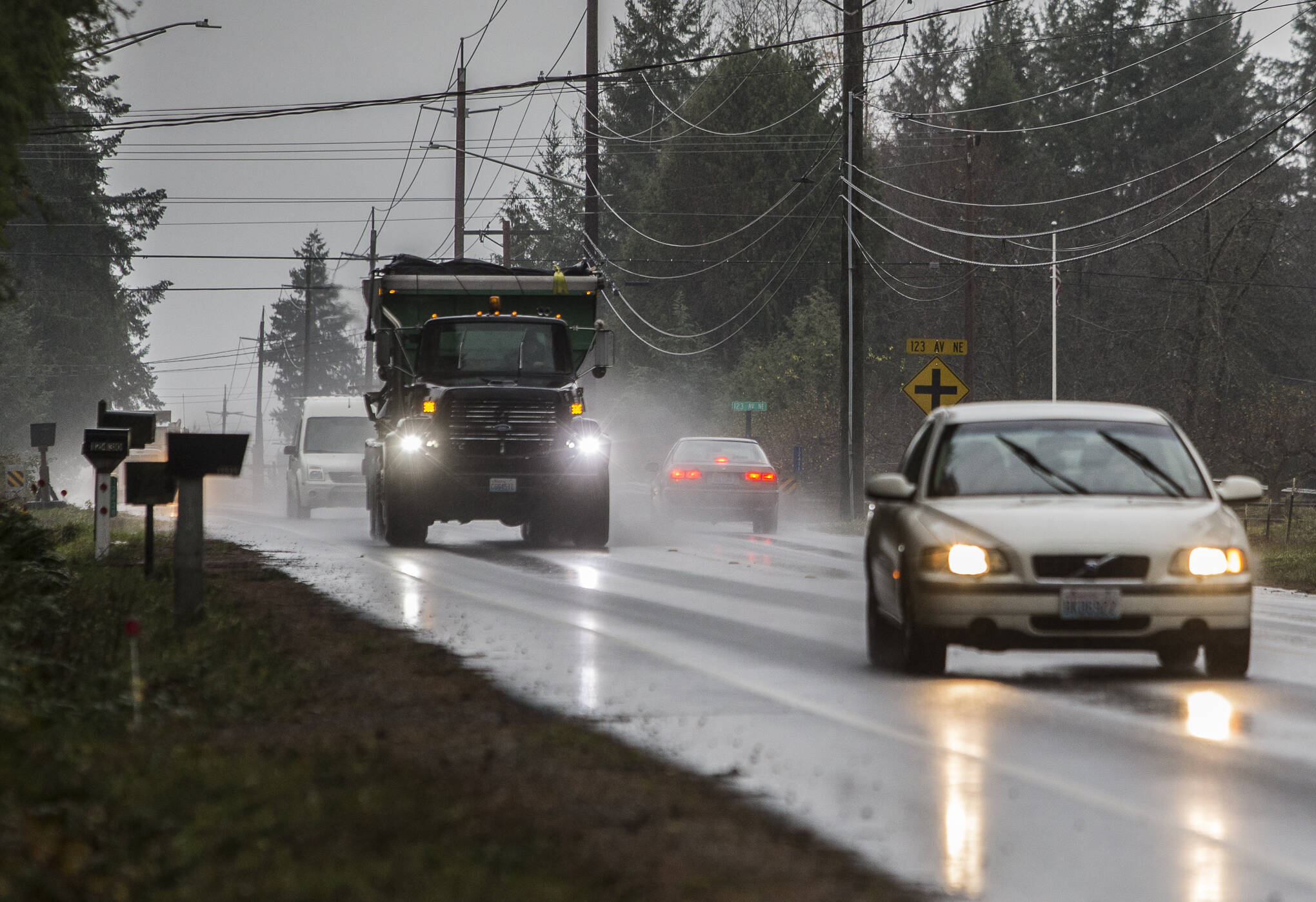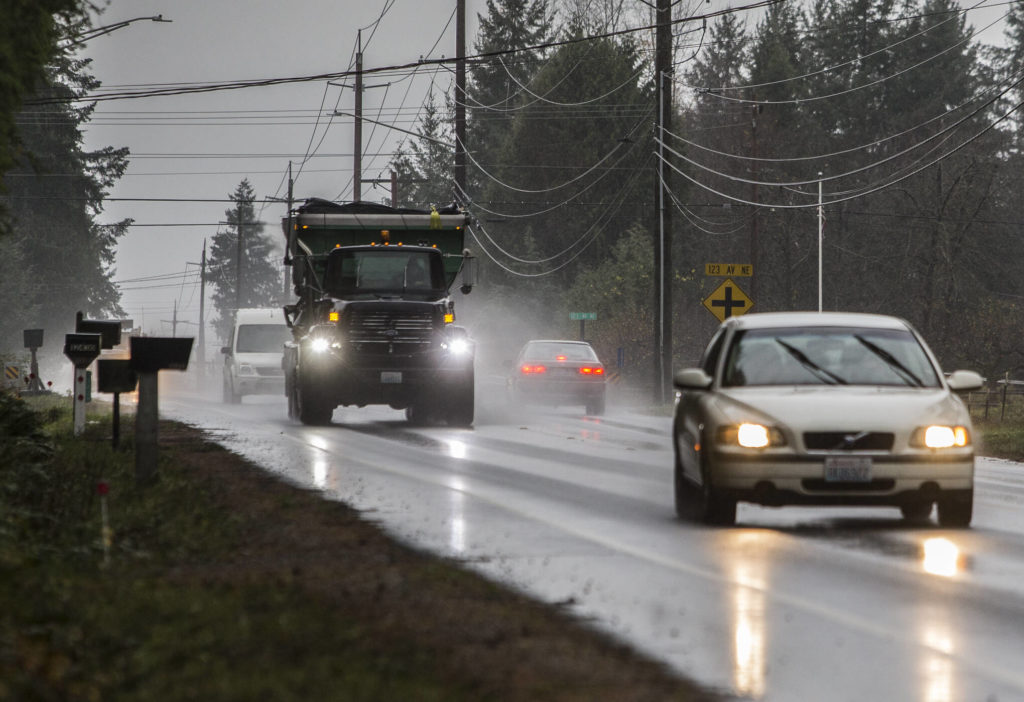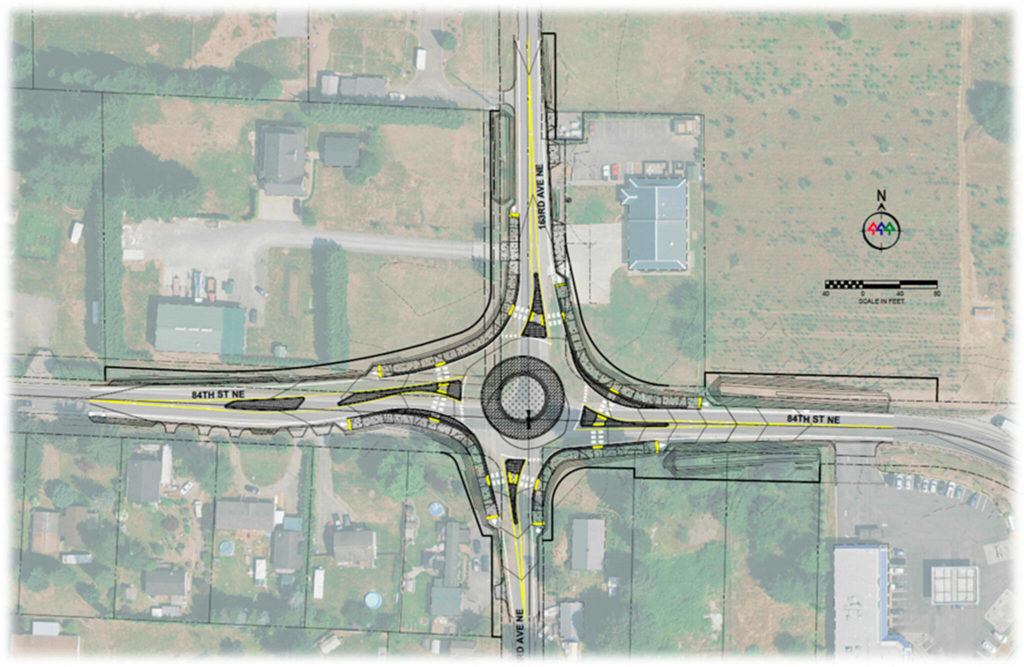A two-lane county road between Granite Falls and Marysville has seen some city-like traffic in recent years.
Connecting Highways 9 and 92, 84th Street NE is an important link for people getting around that part of Snohomish County. It also has some of the most crashes on a Snohomish County road, traffic engineer Mohammad Uddin said.
Over $4 million in new grant funding aims to make 84th safer.
Around 14,200 vehicles use the road’s west section every day. An average of 8,300 vehicles use the east end near Highway 92.
“The 84th corridor has become a very busy, busy corridor for us,” Snohomish County Public Works deputy director and county engineer Doug McCormick said during a Nov. 4 presentation.
Driveways and intersections dot the road, most of them 300 feet apart. That creates sight-distance and other visibility issues, Uddin said.
On a map, it’s a straight line east and west, the kind that can encourage fast driving.
Snohomish County Public Works staff want to improve safety and efficiency along the 50 mph road, McCormick said.
About 85% of vehicles travel at or below 55 mph, Uddin said. But that means some drivers are really speeding.
To curb collisions, county staff proposes lowering the speed limit, narrowing the travel lanes, widening the shoulders and installing roundabouts at the 163rd Avenue NE and 123rd Avenue NE intersections.
Currently, those intersections are controlled by stop signs for travelers going north or south. Drivers on 84th don’t have to stop.,
Generally roundabouts help slow traffic approaching an intersection. They can cut down rear-end collisions and the severity of crashes.
As vehicles approach the concrete traffic circle, they slow to safely negotiate the curve to their exit. That gives other drivers approaching from other directions time to enter, as well.
“Reducing the speed along this corridor will reduce the total number and severity of the collisions,” Uddin said.
Building roundabouts is considered less expensive and more efficient for some intersections. Like any transportation project, though, they take a bit of time for environmental review and actual construction.
But the county doesn’t want to wait for that to bolster safety, so staff is are considering a slew of “near-term” improvements.
Those include advance warning beacons at some driveways and intersections, radar, re-striping the lanes to be more narrow, lowering speed limits and increasing enforcement.
Snohomish County’s engineer can lower the speed limit up to 10 mph on 84th Street NE. Any further decrease requires approval from the Snohomish County Council.
Some people who said they lived nearby supported the projects during the county’s presentation.
But some transportation advocates worry that without signals such as push buttons to cross, pedestrians with disabilities could still have difficulty crossing.
“If they’re not signalized, if you’re blind or low-vision, there’s basically no way to know if it’s safe to cross,” said Anna Zivarts, director of the Disability Mobility Initiative.
Larry Watkinson, who works on Americans with Disabilities Act compliance for the Washington State Department of Transportation, said people with disabilities tell him roundabouts are less safe than intersections with a signal.
But after reviewing data in his six years with the department, Watkinson thinks they can be safer. That requires features such as raised crossings, rapid flashing beacons and a vehicle approach that forces slower speeds.
“Where you have a 50 mph road where they have to slow down to 20 mph at the roundabout, if they can go 30 mph through it, they will,” Watkinson said.
Lowering speed is a major factor in reducing fatal collisions, said Barb Chamberlain, WSDOT Active Transportation Division director. Plants and trees in the center island and any splitter islands are visual cues for drivers to slow down, she said.
“Putting it all together, I think, over time will have a beneficial effect,” Chamberlain said.
Snohomish County plans to install a raised shared-use concrete sidewalk with a buffer of 3 feet from the roadway. That’s more than current county standards for rural roads, staff said.
Crosswalk pavement markings, detectable warning surfaces (like the yellow squares with bumps at some crosswalks) and pedestrian crossing signs will be part of the roundabouts, too.
County staff said the roundabouts “significantly” reduce the number of conflict points for bicyclists and pedestrians with drivers.
Distances across the roads will be shorter for people rolling or walking across. They can focus on one lane of traffic and will have a raised island between lanes if they need to wait to cross further.
During the county’s presentation, an anonymous neighbor worried a roundabout farther east at 163rd Avenue NE would further back up traffic at Highway 92. People heading west from the highway and trying to turn left into the Getchell Station shopping center can wait a long time, the neighbor reported. That can back up traffic onto the highway.
A roundabout would have a splitter island or lane that separates oncoming traffic near the circle. But the resident wondered if that would further block people from turning left into the shopping plaza.
Design hasn’t been finished, so it may not be a problem, said Charlie Green, Snohomish County engineering services design manager. But the roundabout could be the solution.
Instead of turning left, the driver could continue to the circle, go around it like a U-turn, and then turn right into Getchell Station.
“It would be very short, very safe to be able to do that,” Green said.
In 2019 the state awarded Snohomish County a $1,812,000 federal Highway Improvement Safety Program grant for that roundabout.
A $653,000 federal Highway Safety Improvement Program grant to the county will fund work along 84th, and another $1,722,000 is pledged for the roundabout at 123rd. The latter two grants were announced this year.
Short-term improvements, such as lane re-striping and beacons, could be in place by summer, McCormick said.
Design, right-of-way acquisition and utility relocation for the 163rd project are slated for next year, with construction targeted for 2023. Work on the 123rd project is expected in 2025.
Have a question? Call 425-339-3037 or email streetsmarts@heraldnet.com. Please include your first and last name and city of residence.
Talk to us
> Give us your news tips.
> Send us a letter to the editor.
> More Herald contact information.




























